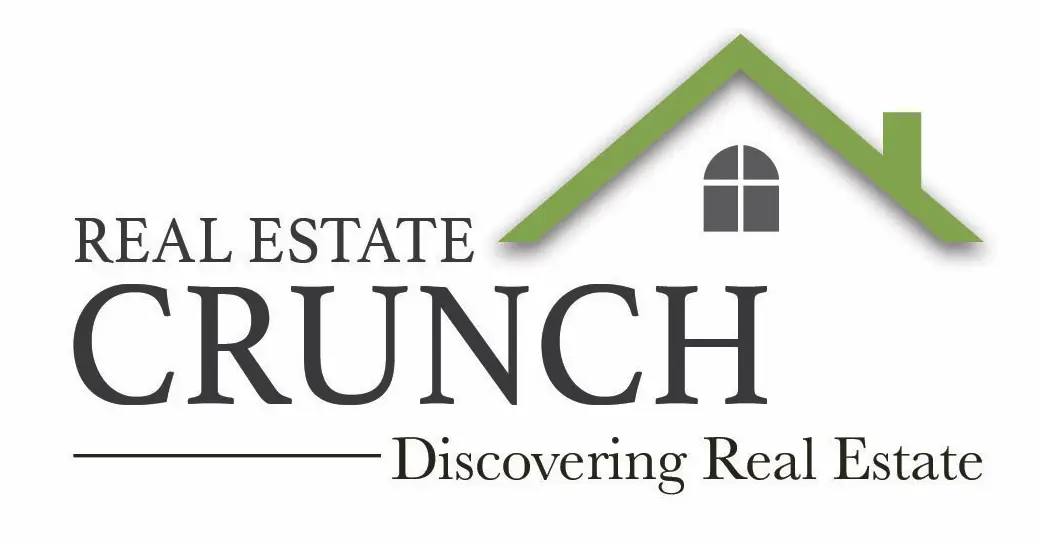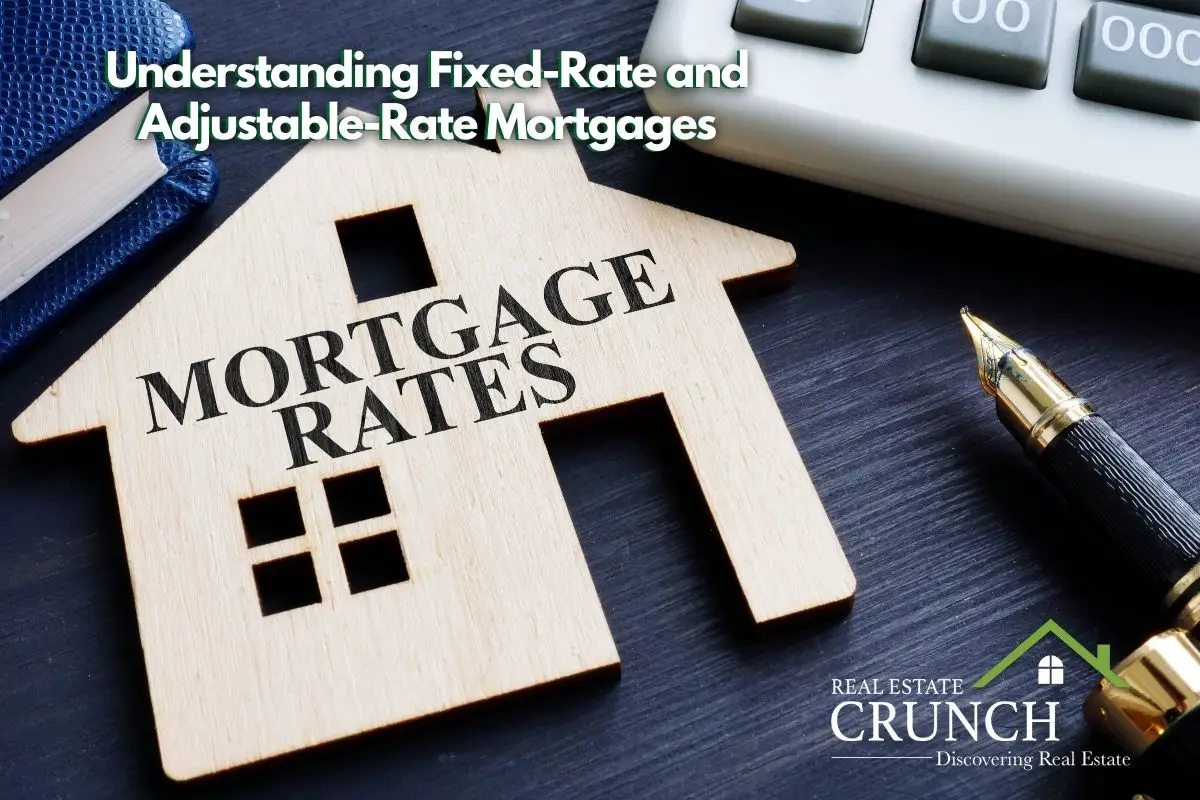Two primary mortgage types are often considered when considering home financing options: fixed-rate mortgages and adjustable-rate mortgages (ARMs).
Each mortgage type offers distinct advantages and potential drawbacks, depending on the borrower’s financial situation, market conditions, and long-term plans. This blog post will delve into the details of fixed-rate mortgages and ARMs, providing a comprehensive overview of their features, benefits, disadvantages, and ideal scenarios.
Table of Contents
- Fixed-Rate Mortgages
- Adjustable-Rate Mortgages (ARMs)
- Comparative Analysis: Fixed-Rate Mortgages vs. Adjustable-Rate Mortgages
- Case Scenarios
- Related Question
Fixed-Rate Mortgages
A fixed-rate mortgage is a popular type of mortgage that locks in the interest rate for the entire term of the loan. This means that the borrower’s monthly mortgage payment remains the same throughout the life of the loan, providing predictability and stability.

Key Features of Fixed-Rate Mortgages
- Interest Rate Stability: The interest rate is set at the beginning and does not change over the life of the loan.
- Consistent Payments: Monthly principal and interest payments remain the same, making budgeting easier.
- Loan Terms: Common terms are 15, 20, and 30 years, with 30 years being the most popular.
Pros of Fixed-Rate Mortgages
- Predictability: Borrowers know precisely how much their monthly payments will be, simplifying long-term financial planning.
- Protection from Rate Increases: Borrowers are shielded from fluctuations in interest rates over the loan’s term.
- Simplicity: Fixed-rate mortgages are straightforward and easier to understand than other mortgage types.
- Stability in Monthly Budget: Since payments do not change, managing household budgets and expenses is easier.
Cons of Fixed-Rate Mortgages
- Higher Initial Rates: Fixed-rate mortgages often have higher initial interest rates than adjustable-rate mortgages.
- Less Flexibility: If interest rates drop significantly, borrowers with fixed-rate mortgages must refinance to take advantage of lower rates, which can involve additional costs.
- Potentially Higher Long-Term Costs: If interest rates remain low over the long term, a fixed-rate mortgage could be more expensive than an ARM.
When to Choose a Fixed-Rate Mortgage
- Long-Term Homeowners: If you plan to stay in your home for many years, the stability and predictability of a fixed-rate mortgage can be beneficial.
- Stable Interest Rate Environment: Locking in a fixed rate can be advantageous when interest rates are low and not expected to drop further.
- Preference for Consistency: A fixed-rate mortgage is a good choice if you prefer knowing exactly what your monthly payments will be without the risk of changes.
When to Avoid a Fixed-Rate Mortgage
- Short-Term Plans: If you plan to sell or refinance within a few years, a fixed-rate mortgage’s higher initial interest rate may not be worthwhile.
- Falling Interest Rate Environment: If interest rates are expected to decrease, an adjustable-rate mortgage might offer lower initial payments and savings.
Adjustable-Rate Mortgages (ARMs)
Adjustable-rate mortgages have an interest rate that remains the same for the first few years of the loan, after which it adjusts periodically based on a specified index plus a margin. The initial rate is usually lower than a fixed-rate mortgage, making ARMs attractive to some borrowers.

Key Features of Adjustable-Rate Mortgages
- Initial Fixed-Rate Period: The interest rate is fixed for a certain number of years at the beginning of the loan (commonly 5, 7, or 10 years).
- Periodic Adjustments: After the initial period, the rate adjusts periodically (typically annually) based on an index such as the LIBOR, COFI, or the One-Year Treasury Index.
- Caps and Floors: ARMs often have caps that limit the increase in the interest rate and monthly payment at each adjustment and over the life of the loan.
Pros of Adjustable-Rate Mortgages
- Lower Initial Rates: ARMs typically offer lower initial interest rates compared to fixed-rate mortgages, which can result in lower initial monthly payments.
- Potential Savings: If interest rates remain stable or decrease, borrowers can benefit from lower payments after the initial fixed period.
- Flexibility: ARMs can be a good option for borrowers who plan to move or refinance before the adjustable period begins.
- Rate Caps: Caps on ARMs limit the amount by which the interest rate can increase, providing some protection against steep rate hikes.
Cons of Adjustable-Rate Mortgages
- Interest Rate Uncertainty: The interest rate can increase after the initial fixed-rate period, potentially leading to higher monthly payments.
- Complexity: ARMs are more complex than fixed-rate mortgages, with terms and conditions that can be harder to understand.
- Payment Fluctuations: Monthly payments can change, making it harder to budget and plan for long-term financial commitments.
- Potential for Higher Long-Term Costs: If interest rates rise significantly, an ARM could become more expensive than a fixed-rate mortgage over the long term.
When to Choose an Adjustable-Rate Mortgage
- Short-Term Homeowners: If you plan to sell or refinance before the initial fixed-rate period ends, you can benefit from the lower initial rates without worrying about future adjustments.
- Declining or Stable Rate Environment: ARMs can provide cost savings over fixed-rate mortgages in a declining or stable interest rate environment.
- Flexible Budget: An ARM might be suitable if your budget accommodates potential monthly payment increases.
When to Avoid an Adjustable-Rate Mortgage
- Long-Term Homeownership: If you plan to stay in your home for many years, the uncertainty of rate adjustments can make long-term financial planning difficult.
- Rising Rate Environment: As interest rates are expected to rise, the risk of increased payments can outweigh the benefits of lower initial rates.
- Preference for Stability: A fixed-rate mortgage is a better option if you prefer predictable monthly payments and want to avoid the complexity of rate adjustments.
Comparative Analysis: Fixed-Rate Mortgages vs. Adjustable-Rate Mortgages
Understanding the differences between fixed-rate and adjustable-rate mortgages is crucial for making an informed decision. Let’s compare these two types of mortgages across several dimensions.
Interest Rates and Monthly Payments
- Fixed-Rate Mortgages: Offer a consistent interest rate and stable monthly payments throughout the loan term. This predictability is beneficial for long-term budgeting.
- Adjustable-Rate Mortgages: Begin with lower initial interest rates, leading to lower initial monthly payments. However, payments can fluctuate after the fixed period ends, introducing potential variability into your budget.
Long-Term Costs
- Fixed-Rate Mortgages: Generally, have higher initial interest rates, which might lead to higher long-term costs if market rates remain low.
- Adjustable-Rate Mortgages: Can be cost-effective if interest rates stay the same or decrease, but can become costly if rates rise significantly over time.
Risk and Reward
- Fixed-Rate Mortgages: Minimize risk by locking in a stable rate, offering peace of mind at the cost of potentially higher initial payments.
- Adjustable-Rate Mortgages: Involve more risk due to possible rate increases but offer the reward of lower initial payments and the potential for savings if rates decline.
Complexity and Understanding
- Fixed-Rate Mortgages: Simpler and easier to understand, making them a good choice for first-time homebuyers or those who prefer straightforward financial products.
- Adjustable-Rate Mortgages: More complex with terms that can be harder to grasp, requiring borrowers to understand caps, adjustment periods, and indexes.
Flexibility and Refinancing
- Fixed-Rate Mortgages: Less flexible in benefiting from falling rates without refinancing, which can incur costs.
- Adjustable-Rate Mortgages: More flexible for short-term plans, as the lower initial rates can be advantageous if planning to move or refinance before the adjustable period begins.
Market Conditions and Timing
- Fixed-Rate Mortgages: Better suited for periods of low, stable interest rates or when rates are expected to rise.
- Adjustable-Rate Mortgages: Ideal during times of high initial rates expected to fall or remain stable, offering the opportunity to benefit from lower payments initially.
Case Scenarios
To understand this more, let’s look at potential case scenarios to explain who should consider which mortgage. Like most things with real estate, different mortgages are good for different circumstances.

Scenario 1: The Long-Term Homeowner
Sarah plans to buy her forever home and expects to live there for at least 20 years. She values financial stability and predictability. A fixed-rate mortgage would be ideal for Sarah, as it offers consistent payments and protects her from future interest rate increases, allowing her to plan her long-term finances confidently.
Scenario 2: The Short-Term Mover
John is purchasing a home but plans to relocate for his job in five years. He wants to minimize his monthly payments during this period. An ARM with a 5/1 structure (a fixed rate for the first five years) would suit John. He can use the lower initial rates and sell the house before the rate adjustment period begins.
Scenario 3: The Investor
Emily is a real estate investor who plans to buy, renovate, and sell properties within a few years. She aims to keep her initial costs low. An ARM would work well for Emily, providing lower initial payments and the flexibility to maximize her investment returns before selling the properties, ideally before the rates adjust.
Scenario 4: The Uncertain Planner
Michael is uncertain about his long-term plans. He wants the flexibility to move or stay, depending on how his career evolves. Given the uncertainty, a hybrid ARM with a more extended fixed-rate period, such as a 7/1 ARM, might be a good compromise. This offers lower initial payments with some stability for the first seven years, giving him time to decide.
You Can Listen To Our Podcast About What’s the Difference Between Fixed-Rate and Adjustable-Rate Mortgages?
Below or By clicking here.

Real Estate Crunch gives you real property and real estate information and advice. We offer a free monthly newsletter; you can sign up for our newsletter by clicking here.
We also have a weekly podcast called “Real Estate Crunch,” found on all major podcast platforms. Listen to our podcast by clicking here.
Follow us on our social media platforms – Facebook and Instagram.
Related Question
Boxabl Modular Housing, Our Thoughts
Boxabl is a new housing concept that has entered every competitive housing market. Almost everyone I have spoken to has seen or heard about the Boxabl house unfolding on site.
By clicking here, you can read more about Boxabl Modular Housing, Our Thoughts
Prefabricated Housing Trends
As affordable housing continues to be a massive problem in the United States and worldwide, we predict that prefabricated housing will become more critical in the years to come.
By clicking here, you can read more about Pre-Fabricated Housing Trends
Do Modular Homes Come With Electrical And Plumbing?
When you purchase a modular home, all the electrical and plumbing should be included in the cost of the home. The modular home will need to be up to the NEC code or standards for electrical. You must understand the quality and types of pipes and other fittings in the modular home and the manufacturer’s plumbing quality.
By clicking here, you can read more about Do Modular Homes Come With Electrical And Plumbing?

